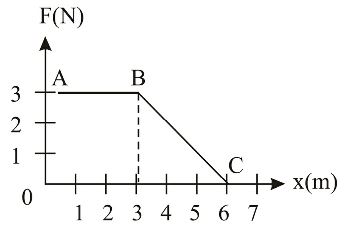

Department of Energy, Nuclear Physics and Reactor Theory. DOE Fundamentals Handbook, Volume 1 and 2. January 1993. Robert Reed Burn, Introduction to Nuclear Reactor Operation, 1988.Physics of Nuclear Kinetics. Addison-Wesley Pub.

Nuclear and Particle Physics. Clarendon Press 1 edition, 1991, ISBN: 978-0198520467 Nuclear Reactor Engineering: Reactor Systems Engineering, Springer 4th edition, 1994, ISBN: 978-0412985317 Stacey, Nuclear Reactor Physics, John Wiley & Sons, 2001, ISBN: 0- 471-39127-1. Baratta, Introduction to Nuclear Engineering, 3d ed., Prentice-Hall, 2001, ISBN: 8-1. Lamarsh, Introduction to Nuclear Reactor Theory, 2nd ed., Addison-Wesley, Reading, MA (1983). The real work done by gas turbine in adiabatic process is then: The work done by gas turbine in isentropic process is then: We transfer the specific heat capacities into units of J/kg K via:Ĭ p = C p. W T = h 3 – h 4s → W Ts = c p (T 3 – T 4s )įrom Ideal Gas Law we know, that the molar specific heat of a monatomic ideal gas is:Ĭ v = 3/2R = 12.5 J/mol K and C p = C v + R = 5/2R = 20.8 J/mol K The temperature (for isentropic process) of the gas at the exit of the turbine is T 4s = 839 K (566☌).Ĭalculate the work done by this turbine and calculate the real temperature at the exit of the turbine, when the isentropic turbine efficiency is η T = 0.91 (91%).įrom the first law of thermodynamics, the work done by turbine in an isentropic process can be calculated from: In this turbines the high-pressure stage receives gas (point 3 at the figure p 3 = 6.7 MPa T 3 = 1190 K (917☌)) from a heat exchanger and exhaust it to another heat exchanger, where the outlet pressure is p 4 = 2.78 MPa (point 4). An isentropic process can also be called a constant entropy process.Īssume an isentropic expansion of helium (3 → 4) in a gas turbine. See also: Thermal Efficiency of Brayton CycleĮxample: Isentropic Turbine Efficiency Isentropic process is a special case of adiabatic processes. thermal efficiency) such cycles (similarly for Rankine cycle) using enthalpies. The net heat rejected is given by Q re = H 4 – H 1Īs can be seen, we can describe and calculate (e.g. isobaric heat rejection – the residual heat must be rejected in order to close the cycle.The work done by turbine is given by W T = H 4 – H 3 isentropic expansion – the heated, pressurized air then expands on turbine, gives up its energy.The net heat added is given by Q add = H 3 – H 2 It is a constant-pressure process, since the chamber is open to flow in and out. isobaric heat addition – the compressed air then runs through a combustion chamber, where fuel is burned and air or another medium is heated (2 → 3).The work required for the compressor is given by W C = H 2 – H 1. isentropic compression – ambient air is drawn into the compressor, where it is pressurized (1 → 2).Two isentropic processes and two isobaric processes. Ideal Brayton cycle consist of four thermodynamic processes. Modern gas turbine engines and airbreathing jet engines also follow the Brayton cycle. Let assume the ideal Brayton cycle that describes the workings of a constant pressure heat engine. For an ideal gas and a polytropic process, the case n = κ corresponds to an isentropic process.Įxample: Isentropic Expansion in Gas Turbine Ideal Brayton cycle consist of four thermodynamic processes. On a p-V diagram, the process occurs along a line (called an adiabat) that has the equation p = constant / V κ. Note that, this ratio κ = c p/c v is a factor in determining the speed of sound in a gas and other adiabatic processes. One for constant pressure (c p ) and one for constant volume (c v ). In which κ = c p/c v is the ratio of the specific heats (or heat capacities) for the gas. The isentropic process (a special case of adiabatic process) can be expressed with the ideal gas law as: In this equation the symbol R is a constant called the universal gas constant that has the same value for all gases-namely, R = 8.31 J/mol K. R is the ideal, or universal, gas constant, equal to the product of the Boltzmann constant and the Avogadro constant,.According to the ideal gas law, pressure varies linearly with temperature and quantity, and inversely with volume. In an ideal gas, molecules have no volume and do not interact. Isentropic Expansion – Isentropic Compression


 0 kommentar(er)
0 kommentar(er)
